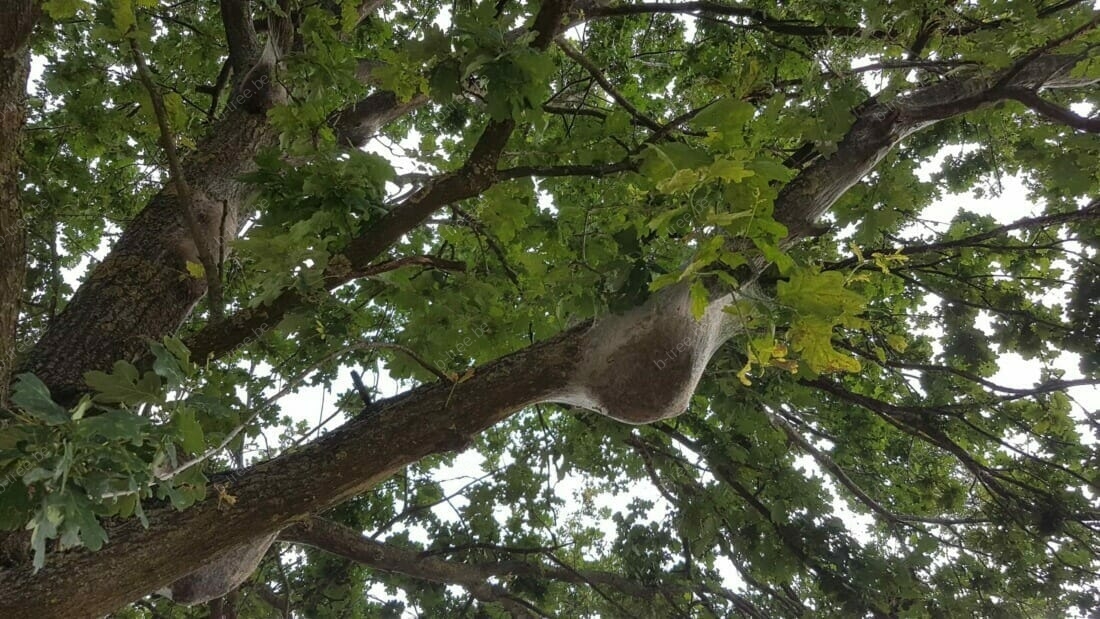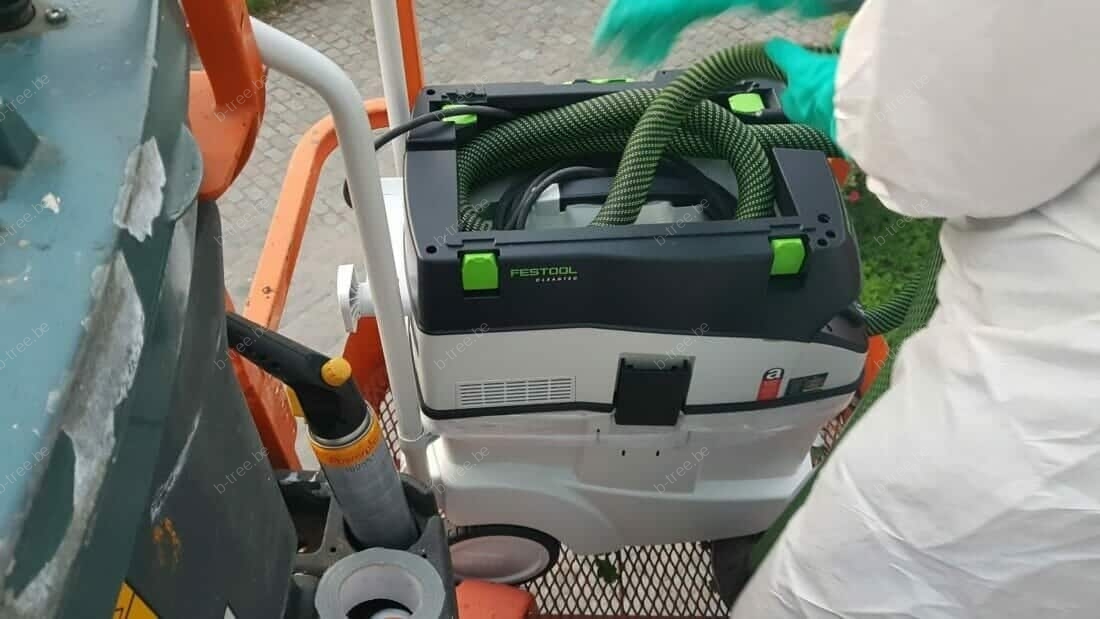



Control or remove processionary caterpillars
You can combat processionary caterpillars in various ways. However, contamination of the stinging hairs with the environment should never occur. Therefore, removing the oak processionary caterpillar must be done correctly. We work in a very specific way so that no, or at least as few, stinging hairs from the oak processionary caterpillars are released during the work.
What are processionary caterpillars or oak processionary caterpillars?
The processionary caterpillars live both high in the crowns of native oaks and on and in the soil near oaks.
The nests usually occur at the underside of the branches.
Very often at the bottom of a branch joint of main branches or smaller branches. You can also find nests on the trunk.
The caterpillars each have up to 700.000 stinging hairs that cause terrible respiratory, skin and eye irritation. Because the processionary caterpillars live in nests, these stinging hairs also occur there. Even if the nests are abandoned, the stinging hairs remain very irritating for 7 to 8 years afterwards. That is why it is also important to remove old nests of oak processionary caterpillars.
Young children in particular are often more likely to suffer from the oak processionary caterpillar because their skin is thinner. And because they play outside near oak trees that are affected by processionary caterpillars.
Remove processionary caterpillars
Because we want as few stinging hairs of the oak processionary caterpillar as possible to fly around in the area while removing the caterpillars, we will first spray the nest with glue. We then remove the nest by placing a plastic bag over it and pulling the nest into the bag. The bag is tied off and placed in a second bag and tied off again. This means there is no contamination with the environment during the removal of the oak processionary caterpillars. We take the bags with us and dispose of them afterwards. So we never leave the processionary caterpillar nests behind!
Now only stinging hairs remain where the nest was located. And because the stinging hairs have a melting temperature above 600 °C, we use a gas burner with a flame temperature of 1.920 °C to burn away the remains on the cork layer of the branches. However, this happens in a fraction of a few seconds, causing virtually no damage to the tree.
If we can use an aerial work platform, we use a special vacuum cleaner to remove the processionary caterpillars. We use the vacuum cleaner to remove the entire nests. And also the remains of stinging hairs that would otherwise remain on the branches or trunk of the tree.
For safety reasons, we burn the nest site again with our gas burner. Otherwise, any remaining stinging hairs could be spread by the wind.
If you would like more information or explanation about combating processionary caterpillars, please do not hesitate to contact us can be contacted without obligation.
You can combat oak processionary caterpillars with the necessary protection
Removing oak processionary caterpillars is best not done yourself. It is very important that there is no contact with the stinging hairs during combating. To prevent irritation and allergic reaction.
That is why we are always equipped with disposable overalls, respiratory protection (FFP3 disposable dust mask or positive pressure face mask) and gloves.

